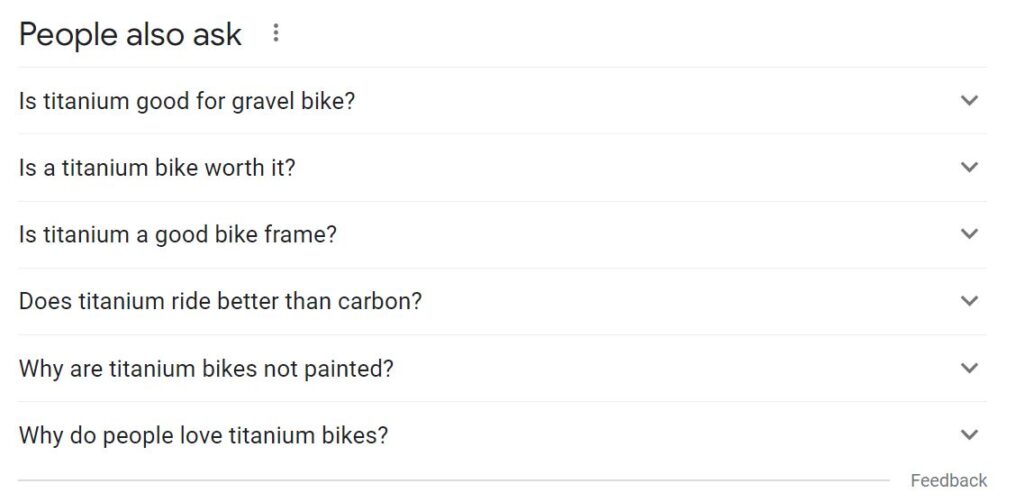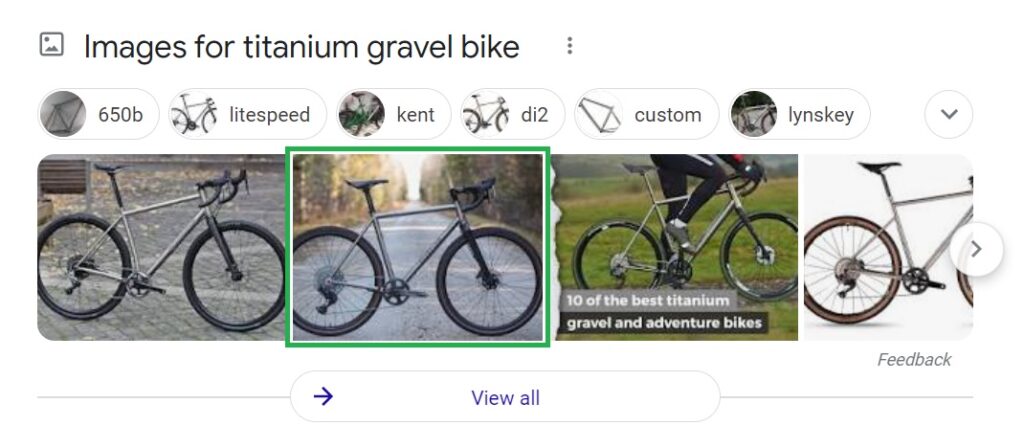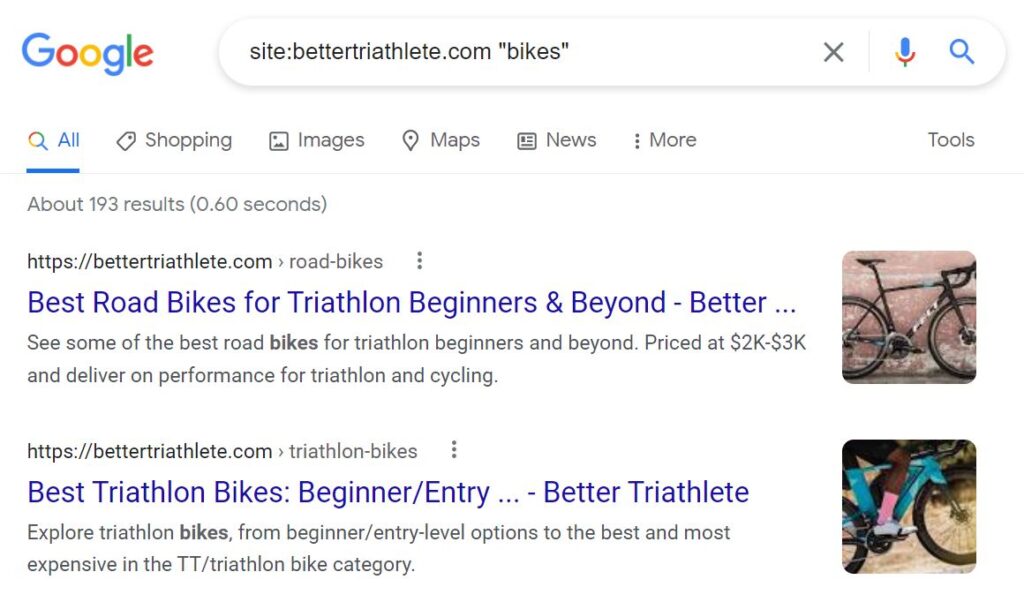Looking back to when I started my career as an SEO copywriter back in ’09, the world of SEO content writing (and content strategy in general) has evolved tremendously.
In simple terms, writing for SEO has become a lot less about using keywords and more about engaging users.
No doubt, keywords and search data still serve a purpose, especially for planning. But for SEO copywriting to really work its magic (particularly in a competitive landscape), it helps to be creative, engaging, and persuasive.

If you’d like to jump to specific SEO content writing tips, use the anchor links below:
2. Read Before You Write
3. Play to What “People Also Ask”
4. Tips About Keyword Inclusion
5. Only Make Claims You Can Back Up
6a. How to Write Title Tags
6b. How to Write Meta Descriptions
7. Write Descriptive ALT Text for Images
8. Utilize Internal Linking
9. Keep E-A-T Top of Mind
10. Leverage Spelling & Grammar Tools
11. Never Deliver Work in an Emotional State
Quick distinction: SEO content writing vs SEO copywriting
While seemingly synonymous, SEO content writing and SEO copywriting are often viewed as two separate things.
- SEO content writing is generally more all-inclusive and involves writing articles, blog posts, and web pages that provide utility and information.
- SEO copywriting is a bit more sales-focused. It still needs to be informative and engaging, but it’s a bit more about persuasion and selling.
While it’s good to grasp this distinction, you don’t have to subscribe to it.
When learning how to write for SEO, a lot of the same tips and best practices apply. So throughout this post, I use “copywriting” and “content writing” interchangeably to simplify things.
My 11 SEO Copywriting Tips & Best Practices
SEO copywriting has always been a common denominator to top-ranking content. Even visual content, like images (think descriptive ALT text) and videos (compelling titles and descriptions), benefit from SEO-inspired copywriting.
For those who are interested in leveling up their craft as an SEO content writer (whether as a profession or an added skill), below I share a collection of SEO copywriting tips and best practices that I believe to be useful, especially for beginners.
1. Exercise BOTH Your Right & Left Brain
One beautiful thing about the SEO content writing process is that it involves both left and right brain stimulation.
Getting super good at producing SEO-friendly copy requires left-brained activities like conducting keyword research and competitive analysis. Simultaneously, it’s in these very discovery processes where right-brained creative ideas are born.

When it comes to SEO content writing, it’s good practice to balance being both left- and right-brained.
- If you’re naturally a great copywriter, maybe you can sharpen your skills in certain SEO discovery processes and strategic ideation.
- If you’re better at SEO content strategy and analysis, maybe it’s your writing skills and vocabulary that need expanding.
Acknowledge your weakness and hone them. SEO copywriting is both an art and science, and it’s an engaging exercise of both sides of the brain.
2. Take Time to Read Before You Write
With any SEO copywriting project, seldomly does it start with opening a word doc and getting right into the writing process. There’s a lot of preparation and planning that goes into it, and a big part of the process is taking time to read before you write.
This might involve reading other content published on the website or blog you’re writing for (to get familiar with the brand’s voice and existing writing style).
It also might involve reading competing content that’s currently ranking for the keywords you’re targeting (to familiarize yourself with what you’re up against).
As with most forms of SEO content writing, there’s a high level of research and digging to find information, data, and insights to help instruct the piece you’re working on. At the very least, reading beforehand is a primer to get your creative juices flowing.
Be diligent about reading and absorbing what’s out there so you can position your piece accordingly. Similarly, don’t just jump right into the writing process (unless you’re truly the subject matter expert behind what you’re writing about).
Get a lay of the land and size up your competitors. You can’t put out mediocre work and expect to see substantial and sustainable SEO gains.
3. Play to What “People Also Ask”
In most scenarios, you should have a content brief assembled beforehand (by either you or a content strategist type role) that outlines what the piece will entail.
With SEO in mind, the brief will include keywords and search data to help inform the structure and positioning of the piece. A key ingredient is what “People Also Ask,” or commonly asked “PAA” questions that related to target keywords.
PAA questions, which appear in the organic search results (see figure below), are a valuable source of visibility and traffic.

As a general takeaway, get familiar with what “People Also Ask” by reviewing and poking into different questions/answers that appear most relevant.
You can find a lot of SEO-content ideas by simply clicking on relevant PAA questions.
These long-tail insights can help you structure your content in ways that maximize SEO impact. If you have access to tools like Ahrefs, you can sometimes validate how often those questions are asked and apply them accordingly.
4. SEO Copywriting Tips About Keyword Inclusion
Some pockets within the SEO community take pride in discounting the importance of keywords like they’re no big deal. These are folks who post “is SEO dead?” surveys on LinkedIn and but rarely produce bangin’ results.
I am not going to lie, keywords are still kind of important (and all you “SEO is dead” people can go to hell). Search data is especially critical when it comes to page mapping, information architecture, and on-site SEO strategy.
Today, it’s more about where keywords are positioned versus pure density (although having a natural blend of keyword inclusion/variation does not hurt either).
Here are a few tips about keyword inclusion and SEO copywriting:
- Use keyword data more for planning than writing copy. Search data is a powerful tool to build a content brief and an outline. The “SEO” in “SEO Copywriting” is more about the framework and structure than it is the creative process.
- Target keyword inclusion is (and probably always will be) of paramount importance when writing page titles and meta descriptions (more on these below). As an SEO copywriter, practice writing creative, engaging, and keyword-friendly titles and descriptions.
- If you have a very precise key phrase that you’re targeting, try to use it in the first paragraph or two, and again naturally (2-3ish times) throughout the page. Prioritize readability and engage users (and using keyword data naturally).
- Apply the concept of keyword proximity. Again, you don’t need to be using the exact match form of target keyword(s) more than a couple of times, especially long-tails. And related to this is next point…
- Keep in mind the fundamentals of semantic search and use contextual variation throughout the copy. Use variations and synonyms with your keywords and utilize search data and PAA questions to grasp the many ways things can be described.
5. Only Make Claims You Can Back Up
A common mistake I see with web content writing is when writers make definitive statements and claims that have no link, reference, or citation to back them up.
That kind of work is simply not cool, especially when we’re talking data and facts. If you can’t, with certainty, find a credible source of the facts you’re writing about (and link/cite them properly), then don’t include it.
Instead, do your homework and find the source of the information/data/insight that you need to make a tangible, meaningful claim.
When you don’t have something tangible, but you’re on to something – a workaround is using search phrasing that doesn’t make your claim sound so definitive. For example, you say things “often” occur, “virtually” all the time, and “can help” make it happen.
6a. How to Write Title Tags for SEO
As I mentioned above, keyword inclusion in the page title tag is an important SEO priority. But like any form of SEO copywriting, it helps to be unique and attention-grabbing.
There’s no big secret behind how to write title tags for SEO. Some tips and best practices are:
- Include your target keyword early, ideally at the beginning of the title tag.
- Keep it simple. Page titles should be succinct and to the point. Emphasize clarity and conciseness, and avoid wordiness.
- Consider special characters to separate keywords/phrases, like |, •, :, &, -, to structure your page tiles (but be consistent).
- Be creative. Don’t settle for boring and robotic title tags like “keyword 1 | keyword 2,” however…
- If it fits, perhaps include aspects of secondary keyword targets and variations where appropriate.
- Avoid lengthy page titles over 65 or so characters. Some say 63 characters. Others say 70 max. Just use your best judgment and don’t sweat it.

The process of how to write meta descriptions for SEO is a natural extension of your page title tags.
6b. How to Write Meta Descriptions for SEO
Writing meta descriptions for SEO requires a bit more creativity and finesse. Although Google shows different iterations of meta descriptions in the search results (same with title tags, depending on the user’s query), I am a firm believer in the SEO-importance of a well-tailored description.
Here’s are a few tips on how to write meta descriptions for SEO:
- Like page title tags, include your target keyword early in the meta description (ideally within the first 60-70 characters).
- Emphasize your UVP/USPs and underscore what makes you/your content/your brand unique.
- Empathize with target search users and highlight the value, benefits, and what’s in it for them.
- Try to keep meta descriptions under 155 characters in length. Your SEO won’t fail if it’s 160. But it might get cut-off in the SERPs.
- Use verbs/action words when possible, like “Learn, Discover, Explore, Find, Read, and Check out.”
- Write meta descriptions using punchy, clear sentences and avoid complex, hard-to-read sentence structure.

Some SEOs argue that the meta description is meaningless (usually based on the dynamic nature of descriptions in the SERPs). I entirely disagree and believe it to be just as important as page title tags.
7. Write Descriptive ALT Text for Images
Next to titles and descriptions, there are also simple tips on how to write ALT text for images for SEO.
The “ALT” tag is meant to be “Alternative” text to describe what the image is about. So naturally, it should be descriptive and true to the image/photo/graphic.
In addition to image file naming (e.g. target-keywords.jpeg), it also helps to include target keywords in the ALT tag. This can slightly improve on-page SEO as well as increase the likelihood of the image appearing showing up in Search.
For example, the ALT text and image SEO work I applied to the banner image on BearclawBicycleCo.com has enabled this image to show in competitive SERP:

The search visibility of this image is a nice supplement to a page on that site ranking consistently in the top five.
8. Utilize Internal Linking
Internal linking is the intuitive and strategic process of adding contextual links within the copy to related pieces of content.
A thorough content brief will typically suggest relevant internal links to include a piece of content. But if you’re familiar with the site you’re writing for, internally linking should come naturally.
Obviously, the anchor text you use when linking to a related page can shape its keyword relevance. But internal linking best practices can also have UX benefits, like stronger engagement, which is probably even more impactful when done right.
Sometimes for new projects or one-off assignments, you may need to do some exploring to find related content worth linking to. Try a Google search for “site:domain.com ‘keyword’” The results will show pages from that domain only that have been indexed and contain what’s in quotes.
For example, if I wanted to see all pages on my triathlon blog related to bikes, I could search site:bettertriathlete.com “bikes” and identify potential pages worth linking to.

As with all forms of copywriting work, be creative and practical with your work, and focus on the expectations of users (over search engines).
9. Keep E-A-T Top in Mind
E-A-T, which stands for “Expertise, Authority, and Trust,” is an important concept worth mentioning, especially when maximizing the SEO potential of your content.
SEO copywriters may not grasp it, but SEO content strategists will get it. In a basic sense, it’s similar to “only making claims you back up,” but entails the process of actually backing those and how you do it.
A common example is writing any form of health or nutrition content. You’re likely to mention certain claims, health benefits, and facts that you need to back up. In doing so, you should make a habit to link to the source of information (e.g. PubMed or any good .gov or .edu source).
You may even want to include a citations section at the end of the page and properly cite where you find this information.
Especially with blog SEO content writing, your work needs to be well researched, expertly written, and include both internal links (to other pages of your website) and external links (to credible information on other websites).
Think about the people (either on-staff or in the picture), sources of data, and other assets that you can link to support your content. Google will recognize it.
10. Leverage Spelling & Grammar Tools
At a bare minimum, I highly recommend using the free version of Grammarly, specifically the Chrome browser extension (the premium version is awesome if you can afford it).
In addition to SEO content writing projects, Grammarly is a lifesaver when writing emails and general communication online.
At the very least, run a quick spelling and grammar check. Grammarly doesn’t catch everything, nor does spelling/grammar check. But using tools like these together can help make your writing smoother and more accurate.
11. Never Deliver Work in an Emotional State
Especially with big writing projects that involve dry topics (hello, legal profession), sometimes it’s easy to feel tired, bored, overwhelmed, or just done with a project.
The desire to ship it prematurely and call it done (without properly re-reading it and polishing it up) can be tempting.
Unless you’re significantly time-crunched or on a deadline, always take pause before delivering or publishing your work (especially if you’re feeling emotionally and mentally taxed).
If you can, sleep on it or take a break from it. Return to it refreshed and give your work a well-deserved read-through and edit. Always deliver your best work!
Last Word
Traditionally, SEO copywriting focused on “optimizing” by way of including target keywords in certain frequencies. While keywords still serve a guiding purpose, today’s ranking algo’s support engagement and off-page factors as being more impactful.

By today’s standards, great SEO copywriting is more about producing content so engaging and compelling that people will want to share it and link to it. Easier said than done, right?
Learn more about me, Tyler Tafelsky, or feel free to reach out and get in touch. In addition to the work you’ll find here, I also help support the strategic SEO copywriting services of The Gray Dot Company.
